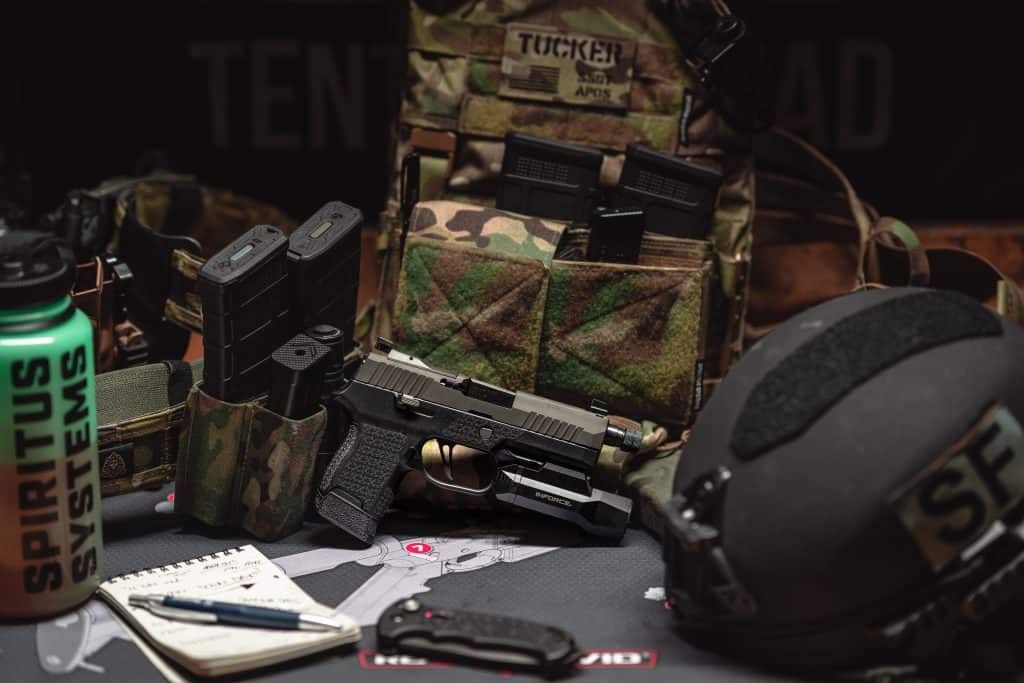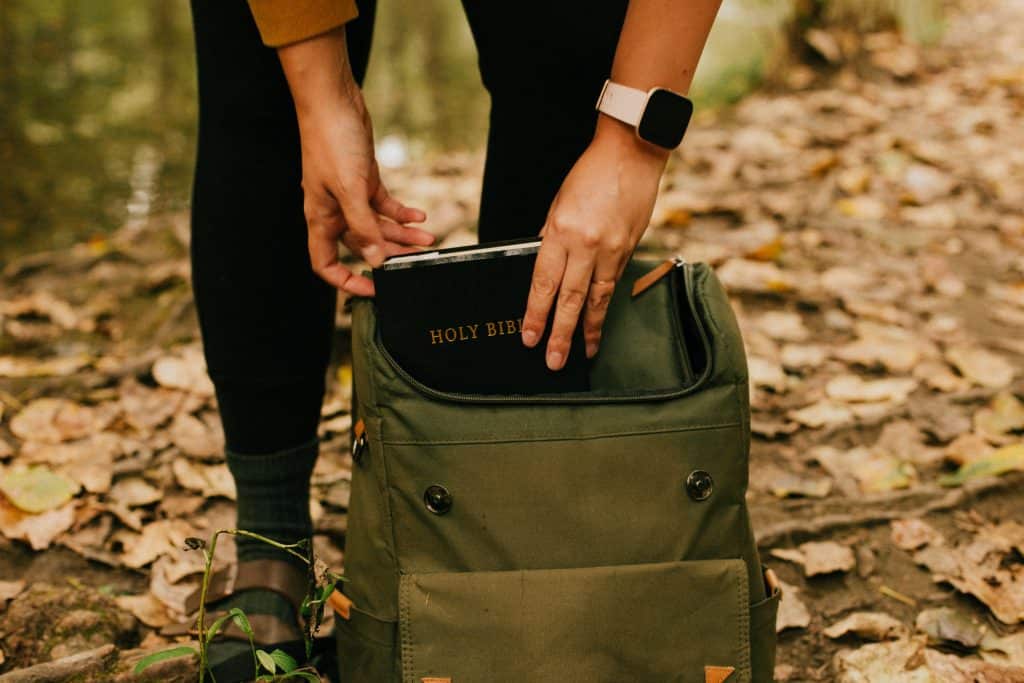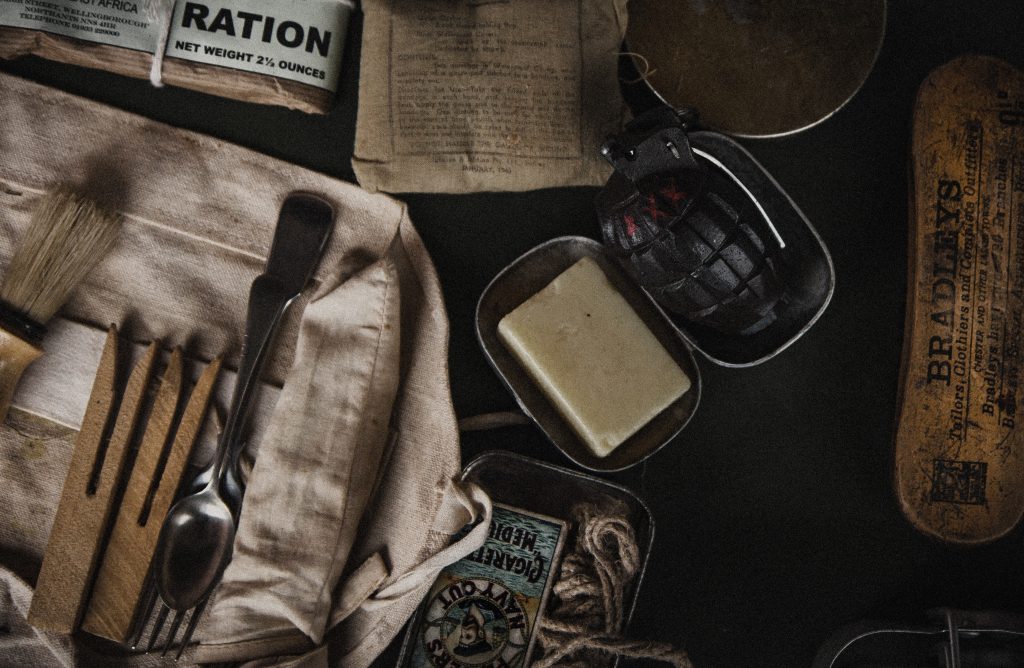Imagine this: You are way behind enemy lines, cut off from your unit, with only the clothes on your back and what is in your belt. A silent, unforgiving harsh wilderness lies before you, awaiting your challenge. In this precarious situation, your survival hinges on one crucial factor: your military survival kit.
Lifesaving Lifeline: Purpose and Importance of Military Survival Kits
Military survival kits are not just any old camping equipment. These are well-stocked lifeline kits, carrying all the tools and equipment necessary to keep one alive when confronted by inconceivable obstacles. But these kits are more than convenient items. They can make the difference between freezing to death or managing until help arrives.

The Four Pillars of Survival:
Military survival kits typically cater to four critical aspects of survival:
• Shelter: Survival kits range from emergency bivy sacks to lightweight tarps, allowing one to protect oneself from the extremes of summer heat and freezing drizzle alike.
• Water Procurement and Purification: Drinking water is critical, and most survival kits include water purification pills or filters to allow salinate liquid to be processed into drinking water.
• Fire Starting and Signaling: The capacity to signal is warmth, cooked food and an important tool for signalling. Most kits also contain lighters, tinder, and magnesium flints for quick access to fire.
• Food and Nutrition: Some kits have high-calorie rations or emergency food bars to allow people to live on them until they are able to find more permanent help.

Adapting to the Arena: Tailoring Kits for Varied Operational Environments
Survival kits can’t be designed using a one-size-fits-all approach. Deserts ‘unforgiving terrain and jungle’s lush foliage require different tools. Thus military survival kits are frequently designed to meet specific operational conditions.
• Desert Kits: Look for things such as reflective sheeting to keep out the sun’s heat, signaling mirrors and additional water purification tablets.
• Jungle Kits: The kits may contain insect repellent, machetes to clear paths, and water purification tablets that kill parasites.
• Cold Weather Kits: In such cold conditions, things like insulated clothing, hand warmers and high-calorie rations become essential.
Be Ready for Anything: Ensuring Readiness for the Unforeseen
Preparation for the unexpected is the very essence of a survival kit. Maintaining and inspecting your kit regularly is the best way to keep it in top shape when you need it.
• Inventory and Replenishment: Make a habit of inspecting its contents, and replace anything which has gone bad. Replace used items promptly.
• Familiarity Breeds Confidence: Train using your own tools and resources in safe environment. The more familiar you are with them, the greater is your chance of survival.
• Training and Education: You must ask for survival training designed for your operational environment. Learning wilderness-survival skills-shelter building, water purification and signaling techniques-can save your life.

Core Components: The Arsenal of Survival
Your military survival kit is no haphazard collection of items, but rather a carefully selected lifesaving weapons system. At the heart of this arsenal lie two fundamental components: First aid and medical equipment Apart from rations and water supplies. These are what provide the foundation for your very life, allowing you to stay alive and giving you weapons to resist injury or disease.
Feeding the Battle: Providing Rations and Water
High-Energy Meals:
Try to imagine traversing dangerous terrain, avoiding capture, and handling important missions on an empty stomach. It’s a recipe for disaster. Which is why most military survival kits put top priority on high-energy rations-concentrated, calorie-rich foods that deliver vital vitamins to sustain the wearer over extended periods of time.
• Meal Bars and Packets: These can be thought of us your own personal power plants. Rich in carbohydrates, protein and fat, they are high energy and slow release foods.
• MREs (Meals, Ready-to-Eat): Making a meal of these boxes means total nutrition, often with main courses, side dishes, desserts and even drinks included. They’re great for conditions where time is limited and cooking equipment is less than ideal.
• Emergency Rations: This kind of ration will keep you alive for short-term emergencies or other special cases. The freeze-dried or dehydrated bars they might be, but not necessarily gourmet, these will keep you going until more resources can be brought in.
Purification Tools for Water Sourcing:
Water is the elixir of life, and many in rough climes devote themselves to searching for water and purifying it. Survival kits provide you with all the necessary equipment to turn this potentially fatal material into a life-saving resource.
• Tablets and Drops: Chemical alternatives such as chlorine dioxide or iodine also remove noxious bacteria and protozoa from water in a matter of just seconds. They’re lightweight, compact and easy to use. It’s ideal for purifying on the go.
• Filters: These portable wonders actually scrub contaminants out of the water itself, for a much more thorough purification process. Straw filter systems, hand-pump type, and even gravity power are available depending upon the situation and preference.
• Desalination Devices: In harsh conditions such as the desert even seawater can be used. Remove salt by consuming desalination tablets or using portable desalination devices such as the solar still, salty water can be transformed into life-saving freshwater. Truly an achievement of human ingenuity.
Tactical First Aid Kit:
This small two-in-one kit is a first line of defense against minor injuries. Expect essentials like:
• Bandages and Gauze: Wound dressing and bleeding control.
• Antiseptics and Wound Cleaners: To prevent infection and facilitate healing.
• Painkillers and Anti-Inflammatory Medications: To block pain and deal with swelling.
• Splints and Immobilization Materials: It is to stabilize fractures and prevent further damage.
• Trauma Shears and Tweezers: For cleaning away debris and simple wound care.
Combat Medications and Treatments:
Beyond basic first aid, military survival kits might also include specific medications and treatments to address battlefield threats:
• Antibiotics: Can effectively protect against bacterial infections caused by cuts or exposure to dirty surroundings.
• Antidotes: In line with the working environment, for snakebites, insects stings or even chemical exposure.
• Anti-diarrheal Medications: To prevent dehydration and electrolyte imbalance as a result of gastrointestinal upsets.
• Burn Creams and Dressings: In order to treat burns and reduce the formation of scars.
Navigation and Communication: Charting Your Path, Connecting with the Outside World
Fear is the worst enemy a person can have when lost and alone in the wilderness. That’s why your survival kit should be like a map, containing everything you need. The first indispensable weapons in your survival arsenal are navigation and communications equipment, the eyes and ears that lead you into unfamiliar territory while ensuring essential contacts with teammates or rescuers.
Travel in the Wilderness-GPS and Equipment for Explorers Precision in Unknown Terrain
Navigating the Labyrinth:
Can you picture yourself walking through thick jungle or crossing a vast desert with only your instincts to rely on? It’s a recipe for disaster. Military survival kits address this by packing the power of precision navigation into lightweight, compact devices:
• GPS Devices: This marvelous little device tells you where on earth you are, records your positions, gives directions and helps you travel safely. Hardware options range from simple hand-held dials to advanced units with built-in compasses, barometers and even satellite imagery capabilities.
• Maps and Compasses: Technology has its points, but the old tools such as topographic maps and compasses never go out of style. Memorizing maps and learning compass navigation shows you’re not completely dependent on electronics.
Tactical Mapping Solutions:
Beyond basic navigation, military survival kits might include specialized mapping tools for battlefield awareness and mission planning:
• Military Grid Reference Systems (MGRS): This type of standardized system can both identify locations and facilitate communication in operation. It can be said that learning MGRS helps you to share your position with others and get guidance.
• Topographic Maps with Overlays: Overlays which indicate features of the terrain, enemy positions and escape routes in different operational environments (jungle warfare, urban combat) supplement detailed maps for specific areas.
Secure Communication Channels: Tactical Radios
During this time of confusion, clear and safe communications are the key to victory or defeat. Military survival kits bridge the gap with powerful and reliable tactical radios:
Breaking Through the Noise:
These robust devices offer secure voice and data communication channels, allowing you to:
• Coordinate with your team: To share mission updates, request support and report enemy activity.
• Contact rescue personnel: If necessary send out signals for rescue or guide rescuers to where you are.
• Access critical information: Command centers can receive reports of enemy movement, weather changes or operational adjustments.
Code of Silence: Encryption and Frequency Hopping Technologies
To keep your communications safe from enemy interception, tactical radios employ advanced security features:
• Encryption: It scrambles your messages and is only understandable if you have the correct decryption key, so that no one except yourself and those in on the deal know what you’re up to or where you will be at any given time.
• Frequency Hopping: But these radios rapidly shuttle back and forth over one radio frequency after another, to the point where it is virtually impossible for enemies to keep track of the signal’s operations.
Forget it, effective communication calls for discipline and clear procedures. With your group, work out some standard operating procedures (SOPs) for using radios in various situations and then train everyone to react mechanically to these SOP when under pressure, to achieve efficient communication.
Conclusion: Equipping Yourself for the Unforeseen
The military survival kit is much more than a bunch of gadgets in a backpack. It’s also the embodiment of human resilience and creativity under pressure. Every individual item, from high-energy foodstuffs to secure radios, is a lifeline in the wilderness. If you bear the essence in mind, adapt it to your environment and know how to use it, then you have the power to battle against something unimaginable.
But be sure to remember, your survival kit is only as good as the user. Train well; develop your wilderness survival techniques; and drill with the equipment in controlled conditions. A survival kit in the right hands is more than just equipment-it’s willpower expressed in material form.
Frequently Asked Questions
What sort of survival kit need to I get?
The best package depends on your needs and surroundings. Consider your operational environment (barren region, jungle, and so on.) and prioritize items based totally on the capability challenges you might face.
How frequently ought to I take a look at and fill up my package?
Regularly check out your package, making sure objects haven’t expired or end up broken. Replace used gadgets promptly and replace your kit contents in case your surroundings or challenge objectives change.
What crucial abilities must I learn for survival?
Mastering primary first aid, barren region navigation, fireplace beginning, and water purification are crucial for survival. Consider extra competencies like refuge constructing, signaling, and suitable for eating plant identity for stronger preparedness.
Where can I get training in desolate tract survival?
Several groups offer survival education guides, consisting of army education programs, outside adventure outfitters, and even on-line resources. Choose a software that aligns with your specific wishes and environment.
